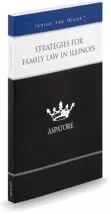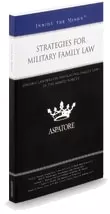IV. ETHICS
- Fee Agreements-Review a Sample Agreement
Practical Tip: All family law attorneys should have a written fee agreement with their client before undertaking any representation in a divorce matter. The Missouri Bar has published Model Fee Agreements and many state bars have done the same. Using a fee agreement from the state bar is often advisable. The Bar Plan also has fee agreements that lawyers can download that mirrors what the Missouri Bar had previously published: https://www.thebarplan.com/missouri-sample-hourly-fee-agreement/
Fee agreements should include clauses such as:
- Scope of Services;
- Hourly Rates;
- Advances Fee Amount (Initial Deposit);
- Litigation Expenses;
- Frequency of Billing Statements;
- Discharge and Withdrawal;
- How long file will be kept after case ends; and
- Disclaimer against estimates and guarantees.
The Rules of Professional Conduct are also crucial as to fees. Rule 1.5 of the
Model Rules of Professional Conduct states as follows:
Rule 1.5 Fees
(a) A lawyer shall not make an agreement for, charge, or collect an unreasonable fee or an unreasonable amount for expenses. The factors to be considered in determining the reasonableness of a fee include the following:
(1) the time and labor required, the novelty and difficulty of the questions involved, and the skill requisite to perform the legal service properly;
(2) the likelihood, if apparent to the client, that the acceptance of the particular employment will preclude other employment by the lawyer;
(3) the fee customarily charged in the locality for similar legal services;
(4) the amount involved and the results obtained;
(5) the time limitations imposed by the client or by the circumstances;
(6) the nature and length of the professional relationship with the client;
(7) the experience, reputation, and ability of the lawyer or lawyers performing the services; and
(8) whether the fee is fixed or contingent.
(b) The scope of the representation and the basis or rate of the fee and expenses for which the client will be responsible shall be communicated to the client, preferably in writing, before or within a reasonable time after commencing the representation, except when the lawyer will charge a regularly represented client on the same basis or rate. Any changes in the basis or rate of the fee or expenses shall also be communicated to the client.
(c) A fee may be contingent on the outcome of the matter for which the service is rendered, except in a matter in which a contingent fee is prohibited by paragraph (d) or other law. A contingent fee agreement shall be in a writing signed by the client and shall state the method by which the fee is to be determined, including the percentage or percentages that shall accrue to the lawyer in the event of settlement, trial or appeal; litigation and other expenses to be deducted from the recovery; and whether such expenses are to be deducted before or after the contingent fee is calculated. The agreement must clearly notify the client of any expenses for which the client will be liable whether or not the client is the prevailing party. Upon conclusion of a contingent fee matter, the lawyer shall provide the client with a written statement stating the outcome of the matter and, if there is a recovery, showing the remittance to the client and the method of its determination.
(d) A lawyer shall not enter into an arrangement for, charge, or collect:
(1) any fee in a domestic relations matter, the payment or amount of which is contingent upon the securing of a divorce or upon the amount of alimony or support, or property settlement in lieu thereof; or
(2) a contingent fee for representing a defendant in a criminal case.
(e) A division of a fee between lawyers who are not in the same firm may be made only if:
(1) the division is in proportion to the services performed by each lawyer or each lawyer assumes joint responsibility for the representation;
(2) the client agrees to the arrangement, including the share each lawyer will receive, and the agreement is confirmed in writing; and
(3) the total fee is reasonable.
Rule 1.5(a) requires that lawyers charge fees that are reasonable under the circumstances. The factors specified in Rule 1.5(a)(1) to (8) are not exclusive. Nor will each factor be relevant in each instance. Rule 1.5(a) also requires that expenses for which the client will be charged must be reasonable. A lawyer may seek reimbursement for the cost of services performed in-house, such as copying, or for other expenses incurred in-house, such as telephone charges, either by charging a reasonable amount to which the client has agreed in advance or by charging an amount that reasonably reflects the cost incurred by the lawyer. Comment 1 to Missouri Rule 1.5.
Be cautious when passing expenses on to the client. As the rule and comments indicate, it would not be appropriate to upcharge clients on copying costs by any significant amount. The costs to the client should reasonably reflect your own copy costs. As it relates to any of the Model Rules of Professional Conduct, it is vital to check your local rules as there can be slight differences and nuances by the jurisdiction.
- Dealing with a Pro Se Litigant
Pro se litigants are not represented by counsel and have instead voluntarily taken on the challenge of representing themselves.1 Their lack of legal experience and training in a very difficult and specialized area of law often creates confusion in litigation.2 These litigants may often come to the opposing attorney for some sort of guidance, but your first duty must be to your client.3
Ethical rules can leave attorneys feeling pulled into different directions, and this is very common when dealing with pro se litigants.4 On one side, lawyers have an important duty to their client, but ethical rules guide fairness to the opposing party and counsel.5 The tension between these duties can be confusing in these situations because the parties are rarely evenly matched. In that case, some language from the court can help assuage any doubts about how much understanding a pro se litigant is entitled to be treated fairly.6
However, pro se litigants are bound by the same rules of civil procedure as attorneys licensed to practice law in the state and are entitled to no greater safeguards or benefits than if represented by counsel.7 In People v. Romero, it was found that the defendant’s argument implies that a pro se defendant is entitled to opportunities over and above those normally accorded an attorney is rejected.8 By electing to represent themselves, the defendant subjected themselves to the same rules, procedures, and substantive law applicable to a licensed attorney.9 A pro se defendant cannot legitimately expect the court to deviate from its role of impartial arbiter and accord preferential treatment to a litigant simply because of the exercise of the constitutional right of self-representation. 10
- Conflict Checks
Conflicts of interest can pose a serious problem if not properly handled from the start of a lawyer-client relationship. A conflict search is a necessary part of any practice. All family law attorneys need to have a conflict of interest software or other appropriate measures, that screens whether the firm has a conflict of interest. If your firm does not have conflict software or other appropriate safety measures in place, you are playing with fire. There are some cases where the conflict can be waived by individuals with a conflict waiver. Below is the Model Rule of Professional Conduct on conflicts of interests in terms of current clients:
Rule 1.7: Conflict of Interest: Current Clients
(a) Except as provided in paragraph (b), a lawyer shall not represent a client if the representation involves a concurrent conflict of interest. A concurrent conflict of interest exists if:
(1) the representation of one client will be directly adverse to another client; or
(2) there is a significant risk that the representation of one or more clients will be materially limited by the lawyer’s responsibilities to another client, a former client or a third person or by a personal interest of the lawyer.
(b) Notwithstanding the existence of a concurrent conflict of interest under paragraph (a), a lawyer may represent a client if:
(1) the lawyer reasonably believes that the lawyer will be able to provide competent and diligent representation to each affected client;
(2) the representation is not prohibited by law;
(3) the representation does not involve the assertion of a claim by one client against another client represented by the lawyer in the same litigation or other proceeding before a tribunal; and
(4) each affected client gives informed consent, confirmed in writing.
Loyalty to a current client prohibits undertaking representation directly adverse to that client without their informed consent. Thus, absent consent, a lawyer may not act as an advocate in one matter against a person the lawyer represents in some other matter, even when the matters are wholly unrelated. The client, with whom the representation is directly adverse, is likely to feel betrayed. The resulting damage to the client-lawyer relationship is likely to impair the lawyer’s ability to effectively represent the client.
In addition, the client on whose behalf the adverse representation is undertaken reasonably may fear that the lawyer will pursue that client’s case less effectively out of deference to the other client (i.e., that the representation may be materially limited by the lawyer’s interest in retaining the current client).
If there is a concern about whether competent and diligent work can be done in representing the client, the attorney should stop and not proceed with the representation. Suppose you, as the attorney, can provide competent and diligent representation. In that case, you can proceed by consulting with the client to discuss their options, including waiving the conflict by consent if they chose to do so. The attorney should obtain informed consent in writing. Suppose there is more than one client with a conflict. In that case, you must obtain written consent from both of them, especially if one party’s case could be materially limited by the attorney’s representation of another conflicted client. Informed consent denotes the client’s agreement for the course of conduct after a full and adequate explanation by the attorney. Informed consent requires that each affected client be aware of the relevant circumstances and the material and reasonably foreseeable ways that the conflict could have adverse effects on that client’s interests.
In addition to current clients, the lawyer still has a duty to former clients as far as conflicts of interest are concerned. Below is the Model Rule of Professional Conduct as to former clients:
Rule 1.9: Duties to Former Clients
(a) A lawyer who has formerly represented a client in a matter shall not thereafter represent another person in the same or a substantially related matter in which that person’s interests are materially adverse to the interests of the former client unless the former client gives informed consent, confirmed in writing.
(b) A lawyer shall not knowingly represent a person in the same or a substantially related matter in which a firm with which the lawyer formerly was associated had previously represented a client
(1) whose interests are materially adverse to that person; and
(2) about whom the lawyer had acquired information protected by Rules 1.6 and 1.9(c) that is material to the matter; unless the former client gives informed consent, confirmed in writing.
(c) A lawyer who has formerly represented a client in a matter or whose present or former firm has formerly represented a client in a matter shall not thereafter:
(1) use information relating to the representation to the disadvantage of the former client except as these Rules would permit or require with respect to a client, or when the information has become generally known; or
(2) reveal information relating to the representation except as these Rules would permit or require with respect to a client.
Matters are “substantially related” for purposes of Rule 1.9 if they involve the same transaction or legal dispute or if there is a substantial risk that confidential factual information as would normally have been obtained in the prior representation would materially advance the client’s position in the subsequent matter. A former client is not required to reveal the lawyer’s confidential information to establish a substantial risk that the lawyer has confidential information to use in the subsequent matter. All of these rules are equally applicable to paralegals as well.
Additionally, imputed disqualifications are important to keep in mind because it relates to lawyers moving between law firms. The Model Rule of Professional Conduct on imputed disqualification is below:
Rule 1.10: Imputation of Conflicts of Interest: General Rule
(a) While lawyers are associated in a firm, none of them shall knowingly represent a client when any one of them practicing alone would be prohibited from doing so by Rules 1.7 or 1.9, unless
(1) the prohibition is based on a personal interest of the disqualified lawyer and does not present a significant risk of materially limiting the representation of the client by the remaining lawyers in the firm; or
(2) the prohibition is based upon Rule 1.9(a) or (b) and arises out of the disqualified lawyer’s association with a prior firm, and
(i) the disqualified lawyer is timely screened from any participation in the matter and is apportioned no part of the fee therefrom;
(ii) written notice is promptly given to any affected former client to enable the former client to ascertain compliance with the provisions of this Rule, which shall include a description of the screening procedures employed; a statement of the firm’s and of the screened lawyer’s compliance with these Rules; a statement that review may be available before a tribunal; and an agreement by the firm to respond promptly to any written inquiries or objections by the former client about the screening procedures; and
(iii) certifications of compliance with these Rules and with the screening procedures are provided to the former client by the screened lawyer and by a partner of the firm, at reasonable intervals upon the former client’s written request and upon termination of the screening procedures.
(b) When a lawyer has terminated an association with a firm, the firm is not prohibited from thereafter representing a person with interests materially adverse to those of a client represented by the formerly associated lawyer and not currently represented by the firm, unless:
(1) the matter is the same or substantially related to that in which the formerly associated lawyer represented the client; and
(2) any lawyer remaining in the firm has information protected by Rules 1.6 and 1.9(c) that is material to the matter.
(c) A disqualification prescribed by this rule may be waived by the affected client under the conditions stated in Rule 1.7.
(d) The disqualification of lawyers associated in a firm with former or current government lawyers is governed by Rule 1.11.
- Ethics Case Law Update
In Office of Disciplinary Counsel v. Morgan, the court looked at multiple ethical charges against the respondent, including misappropriating funds. 11The Court held that the attorney(respondent) violated RLDP 3.27, which provides that the attorney had disabled or is accused of violating the West Virginia Rules of Professional Conduct, and did pose a substantial threat of irreparable harm to the public.12
In Bell v. Dilorenzo, an accusation arose during a divorce trial about a wife’s criminal conduct. 13It turned out that the wife did have a criminal history, but the superior court’s presiding judge was quoted as saying the wife “shouldn’t be approved as a visitation supervisor in future family-court cases.”14 The wife then argued that the news article and public comments about judicial officers talking about her criminal history created a conflict of interest and, therefore, should be a change of venue.15 The change of venue claim before the court was eventually dismissed. 16The court held that the standard was not actual prejudice, but rather, the person must produce sufficient evidence of demonstrating bias, such as personal or pecuniary interest on the part of the decision-maker; mere speculation is not enough.17
Additionally, in Azria v. Azria, the Court ruled that the trial court’s denial of the wife’s motion to disqualify the husband’s co-counsel in the divorce proceeding was warranted. 18 This was the holding even when the wife had a meeting with a partner of the firm representing the husband as co-counsel three years before the husband retained the firm for representation in the divorce — because the wife did not show that partner with whom she met received information that could have been significantly harmful to her in connection with the firm’s representation of husband under a conflict of interest rule.19 Financial information that the wife shared with her partner would have been subject to discovery and was already known to husband.20
In Madden v. Smith, in the middle of dissolution of marriage case, the wife claimed that an attorney representing one of the parties attorneys had previously represented the judge in a lawsuit to which the judge was one of the parties.21 The previous lawsuit was a worker’s compensation case, and the judge was one of several defendants.22 Under another attorney’s supervision, the attorney in charge drafted a notice to remove the case to federal court and a motion to dismiss the case.23 The Court ruled that there was no set of facts to support any indication of bias in the proceedings.24
In Samnick v. Goodman, the wife in an action for divorce against the husband, and the husband counterclaimed for divorce. 25The Superior Court granted the wife’s motion to disqualify the husband’s lawyer and granted the husband a certificate of immediate review.26 The Court held that the Superior Court did not abuse its discretion in disqualifying the attorney from representing the husband. 27
In Toledo Bar Association v. Berling, Berling was retained to represent her in a divorce action.28 The client paid them a total of $3,200, none of which he deposited into his client trust account.29 In March 2017, the parties stipulated that Huth would receive a certain amount of husband’s retirement account.30 The party Berling was represented claimed the amount was off, and Berling said that a revised entry would be made to reflect the accurate amount.31 Berling never made this change and opposing counsel further reduced the amount that Berling’s client would receive.32 Eventually, a motion had to be filed to revise the discrepancy.33 However, by that time, it was too late and the motion was denied. 34 The court ultimately agreed with the board’s decision of punishment.35
In Webb v. Kentucky Bar Association, a public reprimand was an appropriate sanction for the attorney’s failure to independently confirm the entry of divorce decree before informing the client that the decree had been entered and she could remarry. 36
In Matter of Kupta, a newer attorney was suspended for two years and then placed on probation.37 The court held that the attorney failed to act with reasonable diligence and promptness in representing 14 different clients, as required by the rules of professional conduct, among other things, including failing to proceed with interrogatories or a garnishment application for a third client in a post-divorce matter.38 The court further concluded that this violated KRPC 1.3. 39
In Dayton Bar Association v. Sullivan, an ex-wife filed a motion asking the negligent lawyer to file a motion to show cause as to why he had failed to meet his child-support obligations. 40The lawyer lied and said that many dates were scheduled to meet the client’s needs based on their schedule.41 At this point, the client was arrested for not making the motion’s real date as he was told that it was continued.42 The lawyer was subsequently punished with the court reasons that it is not to punish the offender, but rather protect the public from lawyers who are untrustworthy of the trust and confidence essential to the attorney-client relationship.43
1 Tips for Effectively Dealing with Pro Se Litigants, SCHWARTZ HANNUM PC, (Dec. 2015), http://www.shpclaw.com/Schwartz-Resources/tips-for-effectively-dealing-with-pro-se-litigants.com
2 Id.
3 Id.
4 Id.
5 Id.
6 Id.
7 Ballowe v. City of Black Hawk, No. o8CV12, 2008 WL 1826754 (Colo. Dist. Ct. Apr. 18, 2008)(citing People v. Romero, 694 P.2d 1256 (Colo. 1985).
8 People v. Romero, 694 P.2d 1256, 1266 (Colo. 1985).
9 Id.
10 Id.
11 Office of Disciplinary Counsel v. Morgan, 839 S.E.2d 145, 154 (W.Va., 2020).
12 Id. At 157
13 Bell v. DiLorenzo, 2020 WL 4783910, at 3. (Wash. App. Div. 3, 2020).
14 Id.
15 Id.
16 Id. At 6.
17 Id.
18 Azria v Azria, No. 11601N, 11602N, 350021/17, M-1380, 125 N.Y.S.3d 692, 693, 2020 N.Y. Slip Op. 03188, 2020 WL 2951103 (N.Y.A.D. 1 Dept., June 04, 2020).
19 Id. At 694.
20 Id.
21 Madden v. Smith, 2020 WL 2097512, at 8. (N.M. App. 2020).
22 Id.
23 Id.
24 Id.
25 Samnick v. Goodman, 841 S.E.2d 468, 470 (Ga. App. 2020).
26 Id.
27 Id. At 473.
28 Toledo Bar Association v. Berling, 2020 WL 2374073, at 4. (Ohio 2020).
29 Id.
30 Id.
31 Id.
32 Id.
33 Id.
34 Id.
35 Id.
36 Webb v. Kentucky Bar Association, 599 S.W.3d 833 (Ky. 2020).
37 Matter of Kupka, 458 P.3d 242, 244, 311 Kan. 193, 194 (Kan. 2020).
38 Id.
39 Id.
40 Dayton Bar Association v. Sullivan, 158 Ohio St.3d 423, 426, N.E.3d , 405 (Ohio 2020) 405.
41 Id.
42 Id.
43 Id. At 430.





